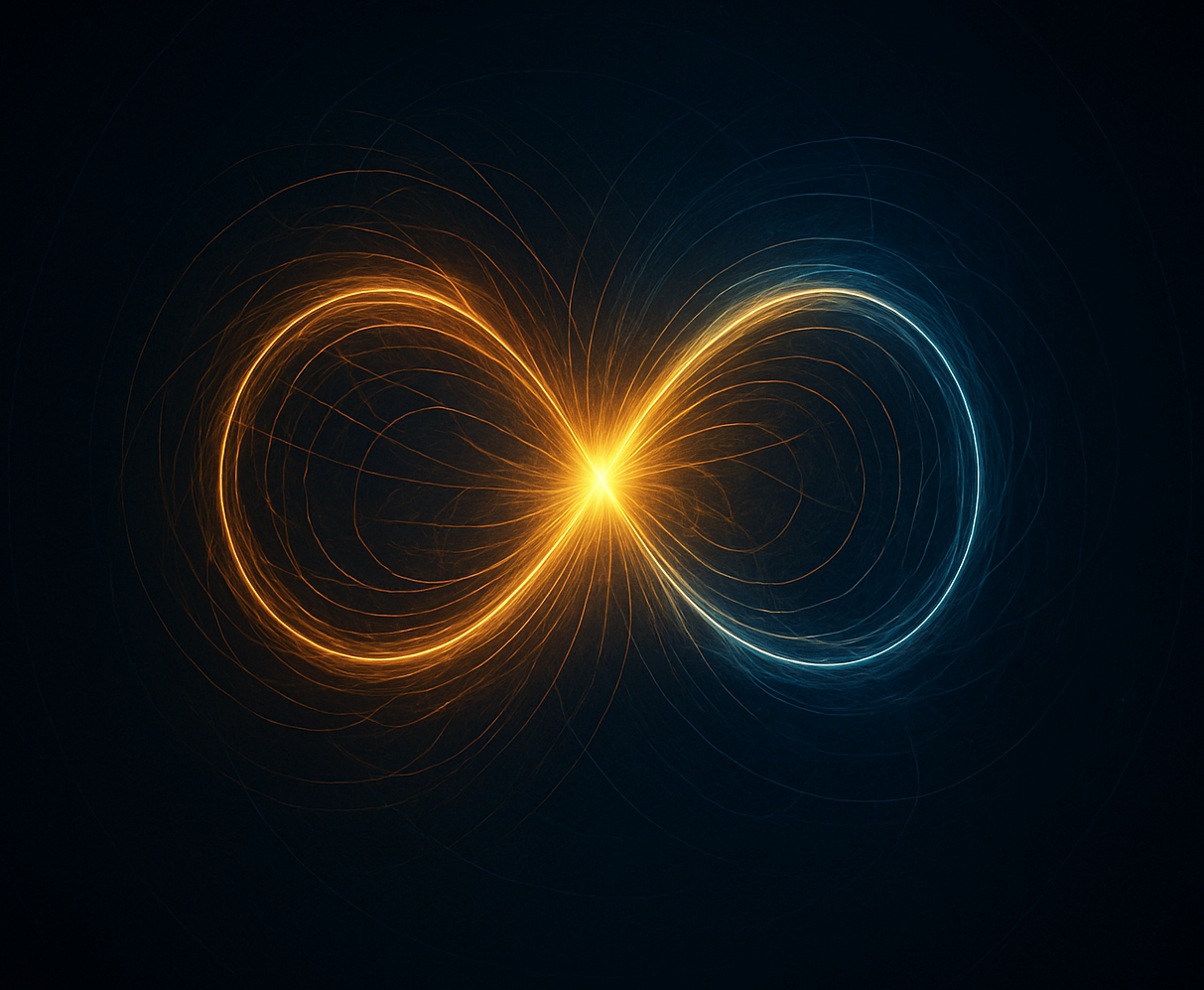Chapter 13
Dark Energy, Dark Matter, and Black Holes
Dark energy, dark matter and black holes. From the names of these three phenomena, one would assume that the last thing responsible for their creation would be light or super high energy E-M radiation in the form of gamma rays. However this what SED has discovered. Just like everything else in the universe, their ultimate cause is the action of E-M fields.
Science currently believes that by far most of the universe is composed of dark energy and dark matter. Possibly less than 20% is what we call ordinary matter.
Let us discuss each of these three peculiar things separately.
Dark energy
Firstly, the exact nature of dark energy has always been a mystery. Physics does not know what it is or what caused it. Astronomy has only measured its effects and surmised its existence.
The reason for the existence of dark energy came about after astronomers found that the universe is not only expanding but that this expansion appears to be accelerating everywhere all the time. They deduced that there must be something to fuel this acceleration and hence proposed what we now call dark energy. The pursuit of this problem continues but has not yet been solved.
SED discussed this and other ideas in the previous section on the universe and will now present a short recap here.
We saw there how SED proposed an explanation of how inflation or the rapid expansion of the early universe could have occurred. If it is also true that this expansion is continuing to accelerate everywhere then perhaps a similar ongoing process is responsible for this mysterious dark energy.
To repeat SED’s arguments here we briefly say that inflation may have been due to massive annihilation of matter and anti-matter in regions of space where both were dense, producing only highly energetic gamma rays. Having no mass meant these photons could spread faster and further than mass ever could. The universe is so astronomically huge that these photons could recombine elsewhere to form matter again and continue the process. Thus the universe expands.
We know that matter and anti-matter have equal probabilities of being formed during supersymmetry or roton production and perhaps there are local regions in space where one type of matter dominates. On the large scale they can remain separated and possibly there is no way of distinguishing one type from the other. In the regions in between, close contact means annihilation and further energy production to fuel the process.
If this occurs on a continuing basis then perhaps it explains dark energy.
Dark matter
Dark matter is another hypothetical concept that cosmologists have introduced to try and explain the strange rotational motion of galaxies. We say it is dark because it has not been observed directly.
Newton and Einstein’s laws of gravity has been confirmed over and over again throughout the universe. However when we observe galaxies they appear to be in conflict with these laws or else we do not fully understand what galaxies are made of.
It is this second point that most scientists prefer to accept rather than blame our theories of gravity. Hence we have introduced the idea of dark matter.
Looking at our solar system shows that the inner planets rotate about the sun faster than the more distant ones. This is in accordance with our laws of gravity. However galaxies do not behave this way. They all seem to rotate as if they are more like a solid disk, with the inner stars rotating around the centre more slowly than our theories predict.
To account for this, the concept of dark matter was introduced. This would be something that pervades a galaxy holding it together and has mass but is invisible. Other than that we know nothing about this proposed substance., other than that it must be very common.
If it is in fact real, SED would have no difficulty in accounting for its behaviour and production.
Just like normal matter, rotons could exist in various sizes and numbers throughout the universe, having different masses to our three stable fermions that we are familiar with. One possible candidate could possibly be like neutrons and have no charge or ability to emit and absorb photons This would make them invisible and apparently unobservable yet still have the property of mass. Of course they would have to be very numerous to have such an effect on galaxies.
However any required mass may be a possible candidate for the particles that could make up dark matter if such a thing exists. Various types could be produced in a similar manner to the three constituents of an atom, depending on the energy of their source photons and their resultant rotons.
In the 1960’s stellar objects called neutron stars were discovered by astronomers. These were able to be observed because of their size and density. This shows how different types of matter can clump together in the vastness of the universe.
Black holes
A black hole is an immense object in space, often found in the centre of galaxies that is so massive and dense that nothing can escape from it, not even light. This is what Einstein predicted in his theory of general relativity.
An interesting corollary of this is that light does not have any mass and consequently should not be affected by gravity like other objects with mass are. It is only influenced by gravity in that gravity comes about because of the curvature or compression of space that massive objects create. However gravity, although caused by mass, is more space related than mass related. This is what Einstein predicted in his theory of general relativity. But as we said in the section on gravity, Einstein only stated that matter curves space, whereas SED predicts that it actually compresses space. This is the mechanism of gravity.
It seems that black holes can initially form when super massive stars collapse at the end of their life. They can then grow to massive sizes by sucking in other stars and nearby objects, including black holes, increasing their influence.
Black holes have a special size or radius known as its event horizon. This is not an observable fixed sphere around the black hole, but a mathematical value based on its mass that once crossed means the falling object can never escape from inside it. A black hole can be any size provided its density is high enough.
We saw earlier in the section on the electron that even elementary particles like the electron have a similar type of event horizon that distinguishes internal and external field strengths. Significantly, we found these two strengths have a ratio exactly equal to the enigmatic fine structure constant or α. This is a unitless constant like pi (π) which possibly is one of the most mysterious number of all. We will devote a whole upcoming section to it soon but now ponder on its connection to black holes and elementary particles.
We saw in that section that the electron has a certain size called the classical size of the electron, termed re , which has been well known and experimentally confirmed since the times of the electron’s discovery. Like all particles the electron has a wavelength due to its mass and energy, called its reduced Compton wavelength. This is the wavelength a photon would have if it had the equivalent energy. It has the symbol ƛe and has a well-known experimental value. Notably the ratio of re to ƛe is likewise α.
Hence we now ask why do elementary particles have a kind of event horizon just like black holes do? Are they somehow related? For the electron we saw that its value is due to the ratio of the sizes of re to ƛe being exactly α and it separates internal from external properties. Amazingly the ratios of these pairs of properties is also α, but why? SED maintains that there may be a deep connection between elementary particles and black holes and that this could be related to the fine structure constant. An intriguing thought.
The Origin of Everything
(Online Edition)
































